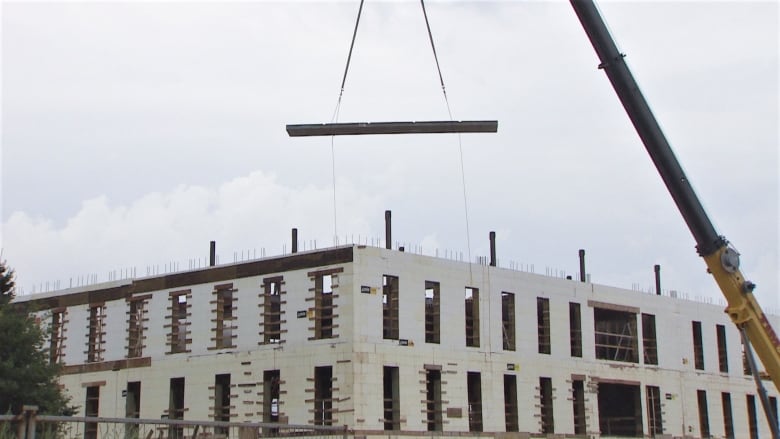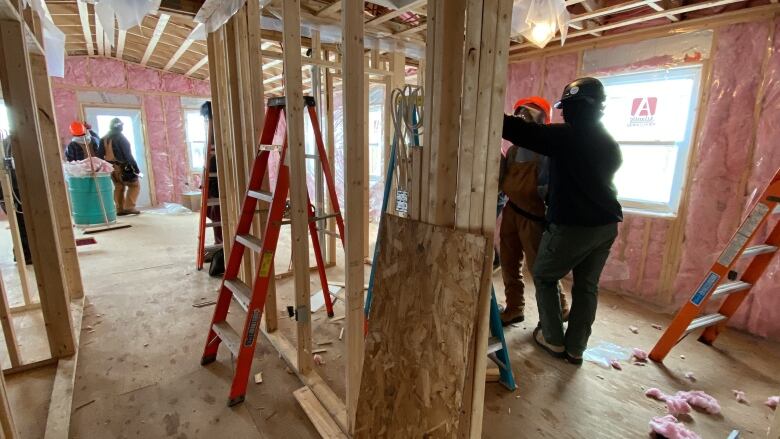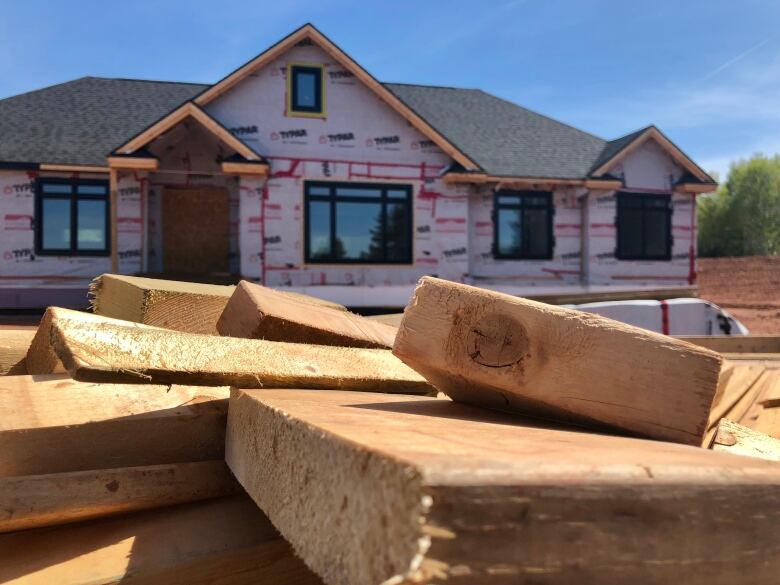Why P.E.I. needs a 'war-time effort' to build housing
5,000 homes are needed right now, and thousands more in the coming years

Prince Edward Island has a steep hill to climb to end its housing crisis, but it is possible, the Federation of P.E.I. Municipalities was told this weekend.
At the group's semi-annual meeting Saturday, federation delegates heard from Matt Pelletier, an independent researcherwho has studied at the London School of Economics and Carleton University.
- Get the news you need without restrictions. Download our free CBC News App.
Pelletier estimates that the province will need to build 2,600 new homes a yearover the next decadein order to catch up with the current housing shortage as well as create apartment units, townhouses and single-family dwellings for the new people who will keep moving here.
"It's going to require a wartime effort," Pelletier told CBC News.
"We have built close to that level before, but it was in the 1970s. We've been in that position before where we've had fiscal tools line up, we've had the co-operation between all the orders of government to support high levels of supply year over year, and it led to positive outcomes.
"So I think it's possible to learn from the mistakes and the success stories of Canadian housing history to reach that level."

There are two reasons P.E.I. needs so many housing units.
- In the last five years, the province has been growing at rates not seen since the 19th century, and has not been buildingenough living spaces to keep up.
- The province is projecting rapid population growthfuelled by immigration to Canada and interprovincial migration, meaning the Island will be home to 200,000 people sometime around the year 2030. Those new residents will need places to live.
Pelletier estimates the current shortfall is about 5,000 homes. Unlike other but smaller population growth spurts in the last 50 years, this most recent one has not been matched by a building boom.
For example, following a 2.4 per cent growth in population in 1971, the province responded with 2,122 housing starts in 1973, which still stands as a record. The province achieved this building feat with a population that was just two-thirds of what it is now.
There were similar patterns of population growth followed by building booms in the 1980s and at the turn of the century.
Building up, but not enough
The problem P.E.I. is facing now is prolonged population growth with no corresponding housing boom.
Talk of a housing crisis started in 2019, following increased population growth starting in 2016. Housing starts had started to grow in 2017, but peaked in 2019 at just 1,504 starts.
What has happened in the last few years could be described as a boom. For years up until 2018, starts were below 1,000, and they have been above 1,000 since then. But the boom in new housing units appears to have peaked, and has not been sufficient to keep pace with the record population growth.

While the province has had successful rounds of building to match population growth in the last half-century, none came close to what is currently required.
According to Pelletier's estimates, the province not only needs to achieve record levels of building, it must sustain that for 10 years.
That is far beyond what was achieved in the 1970s. After that record peak of building in 1973, housing starts fell below 1,000 in 1975. In all, the run of more than 1,000 annual housing starts lasted just four years.
New ways of building
Getting where we need to go will require new approaches, said Pelletier. One way or another, the province is facing big changes.

He said building has been focused too much on expanding into new areas, and that has come at a cost.
"We're losing, proportionally, the most amount of farmland relative to our total land area compared to any other province in the country," he said."It's staggering."

Census figures show that between 2016 and 2021, the province lost an average of 16 hectares of farmland a day.
The lack of a provincial land use plan is partly to blame, said Pelletier. Lower taxes encourage people tobuildoutside of existing municipalities.
"These builds are very resource and space intensive," he said.
"They're predominantly single family homes. They're not rentals, they're not apartments. They're not addressing things in a sustainable fashion from a financial standpoint but also an ecological standpoint."
Instead of building out, the province needs to build up, said Pelletier.
Multi-storied apartment buildings within existing municipal borders will save farmland and woodland outside cities and townsand preserve the character of P.E.I.'s rural landscape. This is important culturally, economically, and environmentally, he said.
With files from Island Morning












_(720p).jpg)


 OFFICIAL HD MUSIC VIDEO.jpg)
.jpg)



























































































